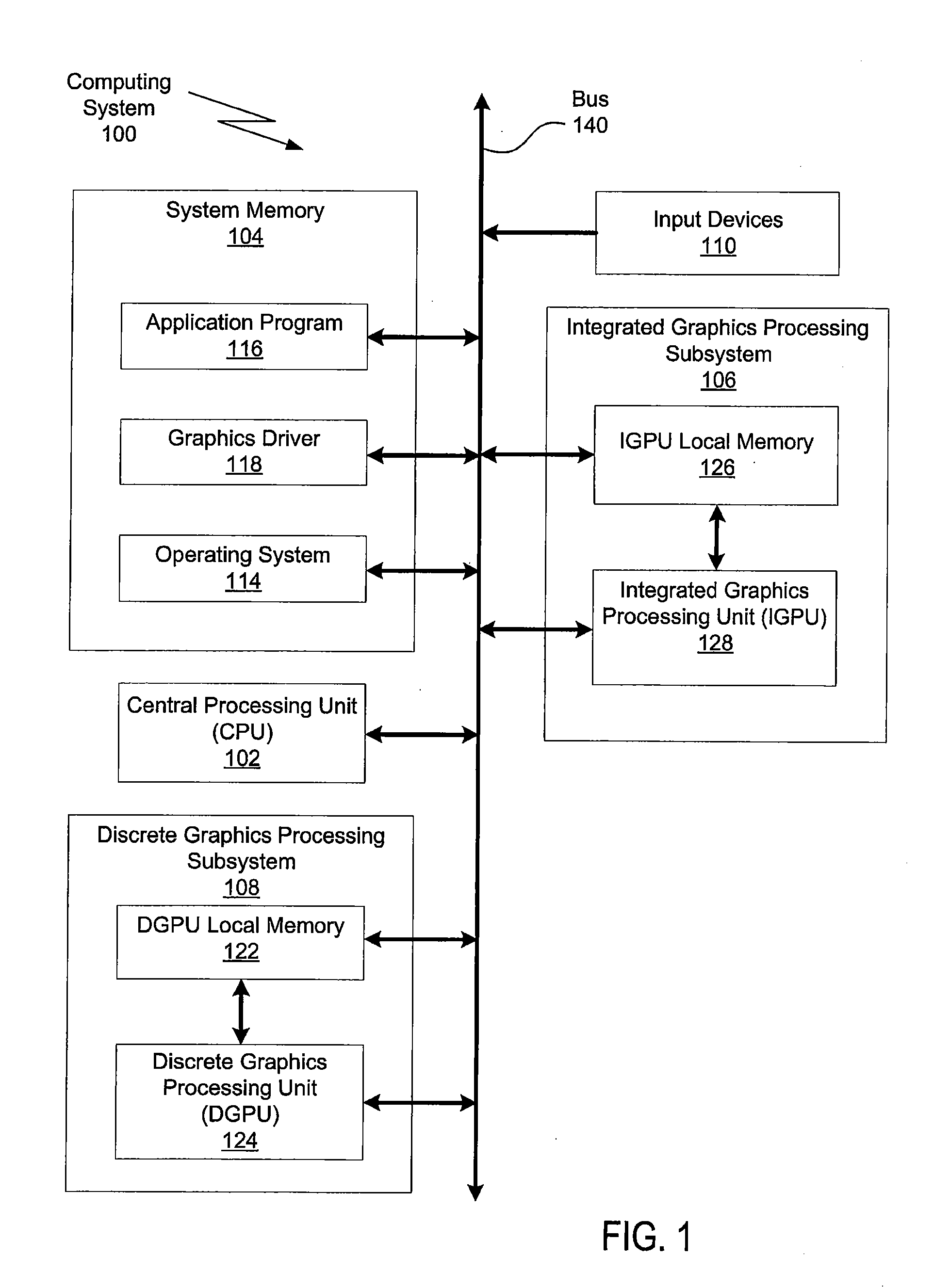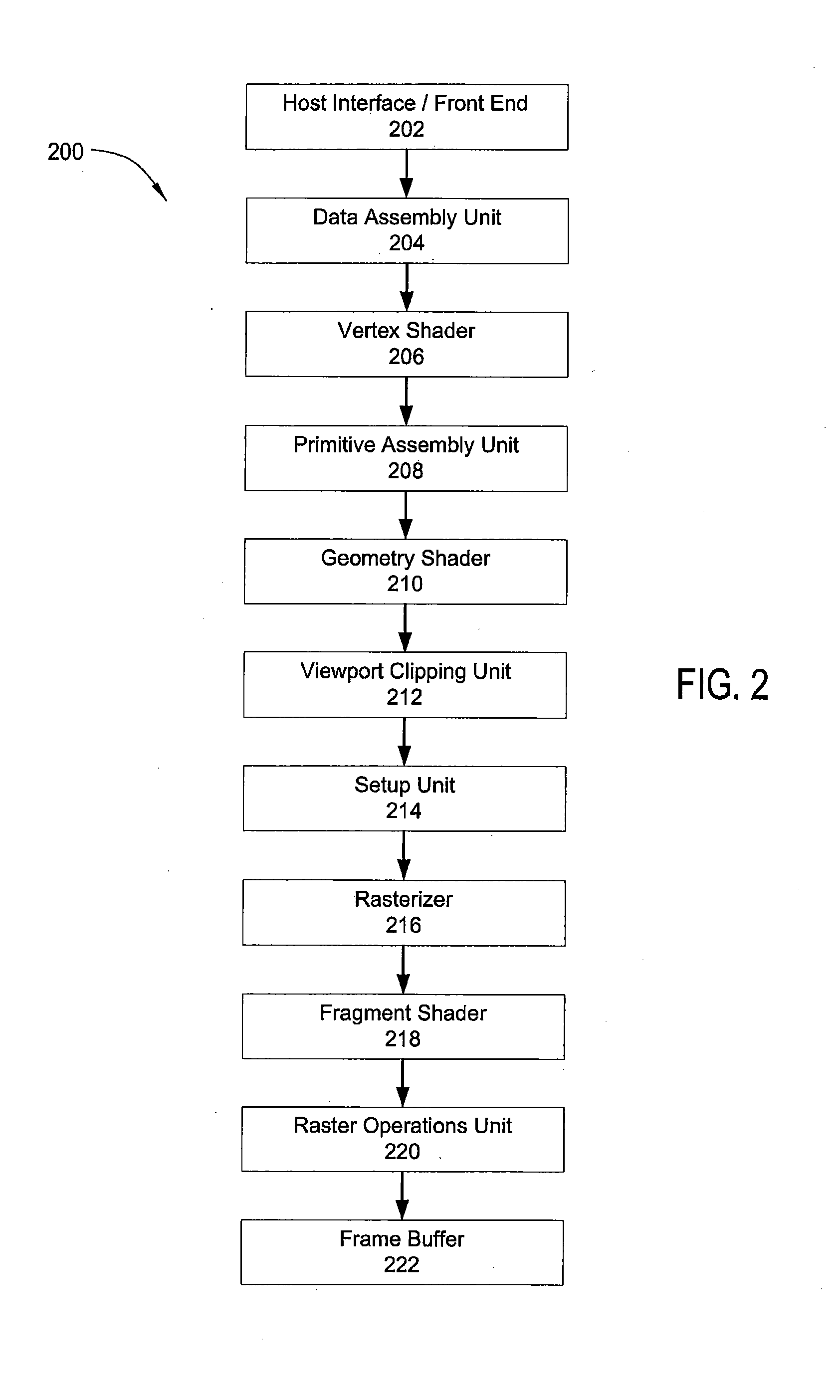Cull streams for fine-grained rendering predication
a technology of fine-grained rendering and stream, applied in the field ofgraphics processing, can solve the problems of reducing overall processing efficiency, limiting the types of tasks that the gpu can perform, and gpu work flow bubbles
- Summary
- Abstract
- Description
- Claims
- Application Information
AI Technical Summary
Benefits of technology
Problems solved by technology
Method used
Image
Examples
Embodiment Construction
[0021]FIG. 1 is a conceptual diagram of a computing system 100 in which one or more aspects of the invention may be implemented. As shown, the computing system 100 includes a central processing unit (CPU) 102, input devices 110, a system memory 104, an integrated graphics processing subsystem 106, and a discrete graphics processing system 108. In alternate embodiments, the CPU 102 and portions of the integrated graphics processing subsystem 106 may be integrated into a single processing unit. Communication paths interconnecting the various components in FIG. 1 may be implemented using any suitable bus or point-to-point communication protocol(s), and connections between different devices may use different protocols as is known in the art.
[0022]The CPU 102 connects to the input devices 110, the system memory 104, the integrated graphics processing subsystem 106, and the discrete graphics processing subsystem 108 via a bus 140. The CPU 102 receives user input from the input devices 110...
PUM
 Login to View More
Login to View More Abstract
Description
Claims
Application Information
 Login to View More
Login to View More - R&D
- Intellectual Property
- Life Sciences
- Materials
- Tech Scout
- Unparalleled Data Quality
- Higher Quality Content
- 60% Fewer Hallucinations
Browse by: Latest US Patents, China's latest patents, Technical Efficacy Thesaurus, Application Domain, Technology Topic, Popular Technical Reports.
© 2025 PatSnap. All rights reserved.Legal|Privacy policy|Modern Slavery Act Transparency Statement|Sitemap|About US| Contact US: help@patsnap.com



